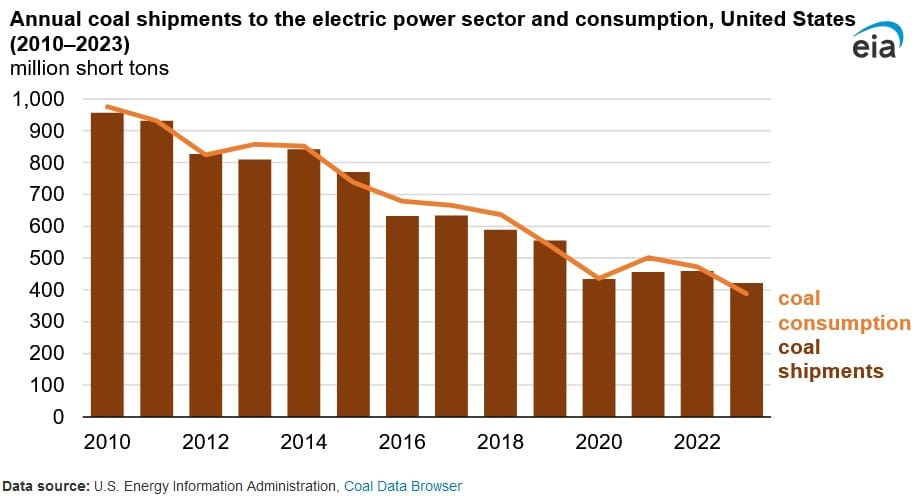U.S. Coal Shipments Eight Percent Lower During 2023: EIA

The quantity of coal transported across the U.S. declined by eight percent during 2023, according to a July 16 report published by the U.S. Energy Information Administration.
U.S. coal deliveries have declined over the last two decades, due to coal’s declining share of power in the generation mix. The quantity of coal transported to power stations declined by more than 50 percent, dropping from 957 million tons in 2010 to 422 million tons during 2023.
A number of factors have led to reductions in coal-fired generation. Coal capacity has diminished because operators have retired about 37 gigawatts, or 17 percent of the coal-fired generation fleet, since the beginning of 2021. Moreover, natural gas-fired and solar production capacity has increased. Furthermore, grid operators mostly utilize the lowest cost power available at a given point, which in recent years has regularly been solar, wind and natural gas rather than coal.
Despite the general downward trend in coal consumption, the agency forecast an increase in U.S. coal usage for power generation during 2024. The quantity of coal being transported is usually correlated with the coal consumption rate; however, it can differ from year-on-year. U.S. coal producers during 2023 shipped nine percent, or 35 million more tons than U.S. power stations used. On the other hand, U.S. coal shipments during 2021 and 2022 were 59 million tons less than the quantities utilized during those two years.
There are four main forms of transportation that transfer coal from the mines to power stations. Around 75 percent of U.S. coal during 2023 was transported by railroads, since a large number of coal fired power stations are distant from the coal fields and mines and railroads have demonstrated to be the most effective transportation method, given the vast railway network across the U.S.
Coal is also transferred across the U.S. by flatboats that function on the inland river system, conveyor belts, or trucks.
EnerKnol Pulses like this one are powered by the EnerKnol Platform—the first comprehensive database for real-time energy policy tracking. Sign up for a free trial below for access to key regulatory data and deep industry insights across the energy spectrum.
ACCESS FREE TRIAL